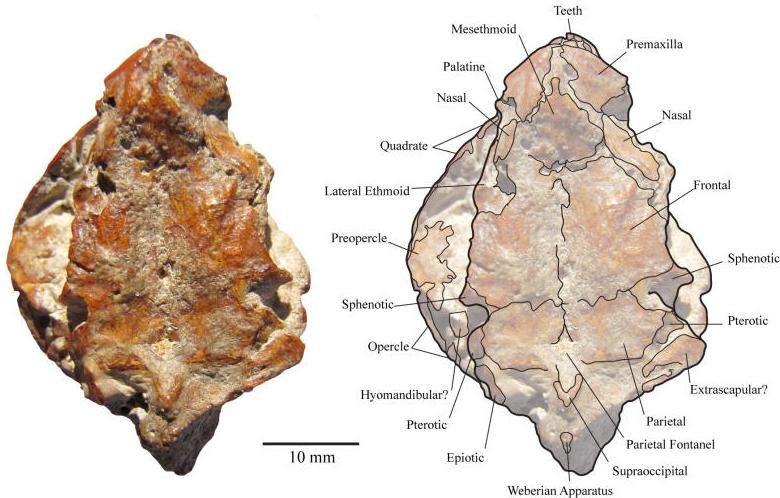Lemur without a nose: This is the lone fossil of a species known as Arrhinolemur scalabrinii - or "Scalabrini's lemur without a nose." The only problem is that scientists have discovered this "lemur" is actually a fish. Credit: Brian Sidlauskas, Oregon State University
CORVALLIS, Ore., Oct. 3 (UPI) -- A new examination of a fossil of a "lemur without a nose" has revealed it's not a lemur or even any kind of primate, U.S. researchers say -- it's a fish.
Classified as a mammal since it was first described in 1898, Arrhinolemur scalabrinii will at last take its rightful place among its fishy brethren following a detailed analysis by scientists from Argentina, Oregon State University and the Smithsonian Institution.
After examining photos and drawings and making a complete analysis from the teeth and jaws to the parietal bones of the skull, the researchers concluded the lemur without a nose is a fish of the family Anostomidae.
The confusion began in 1898 when Argentine paleontologists Florentino Ameghino, after a cursory examination of the fossil, assigned it to the primate family Lemuridae, and wrote of its differences compared to other mammals.
Fifty years later some scientist began to doubt the original classification, arguing it looked more fish-like than mammal-like, a conclusion confirmed by the new research.
"It is the head of a small fish, only a couple of inches long, but it's difficult to tell what it may have grown to," OSU researcher Brian Sidlauskas said in a university release Wednesday.
"Fish in that family can be two inches long or two feet long, and there are 150 to 200 species in the family -- all indigenous to South America."
Putting the fossil in the right family is important, he said.
"Clarifying the fossil record helps scientists to calibrate trees of life and better understand the biodiversity of the planet in the past and compare it to biodiversity today."















